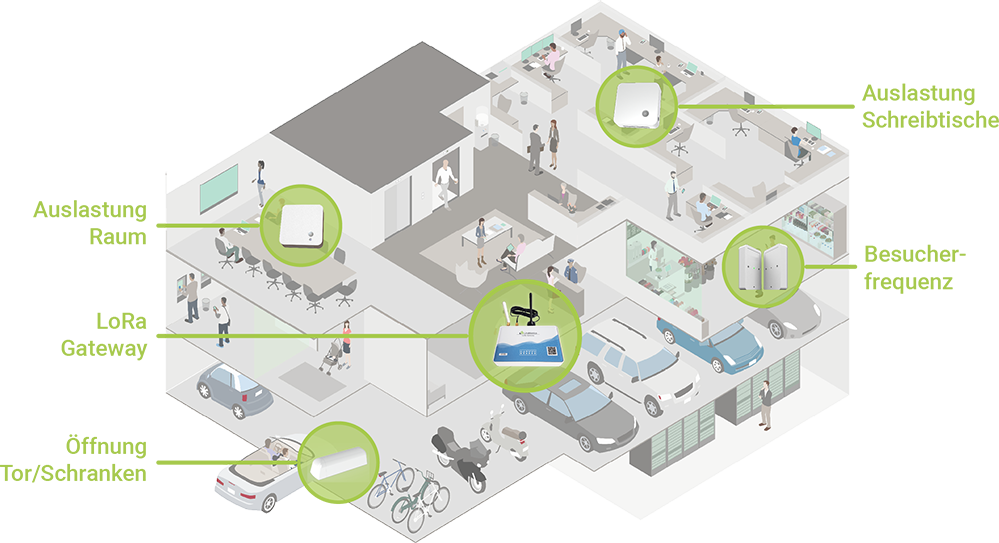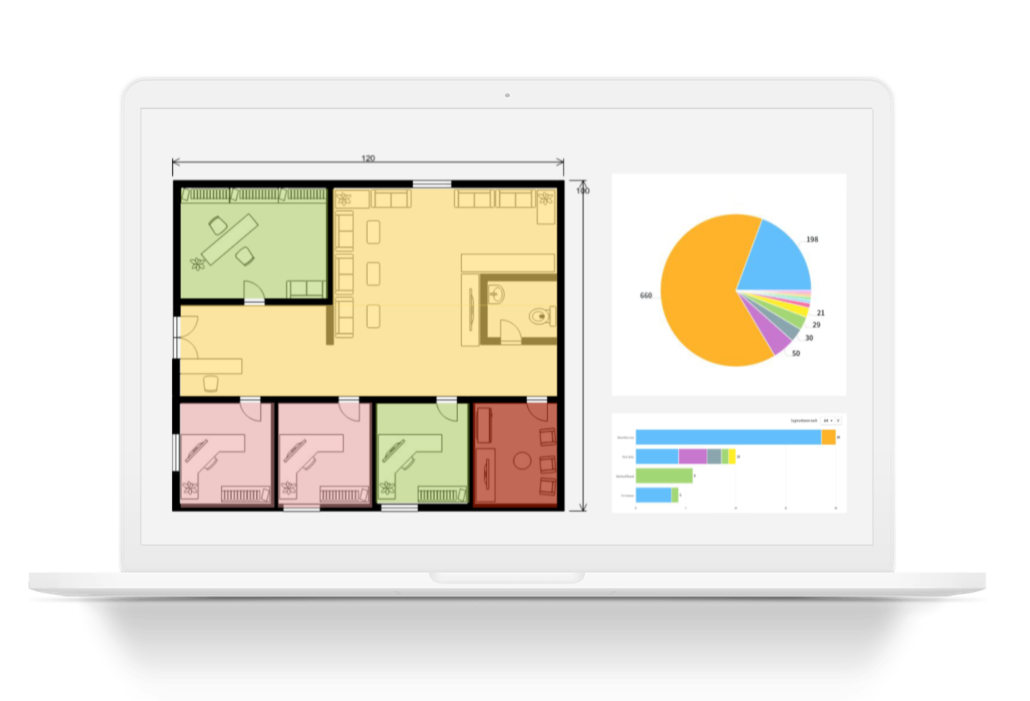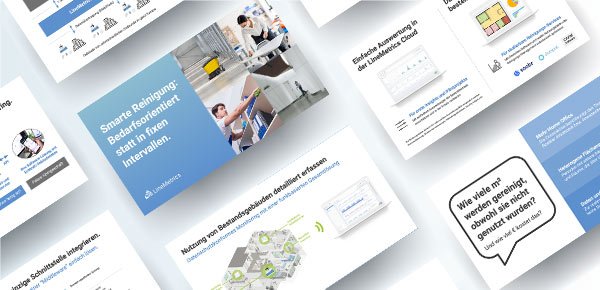Demand-oriented
Cleaning
How many m² are cleaned even though they are not used? And how much money does this cleaning cost?
New working time models, home office and desk sharing are becoming increasingly popular. The coronavirus crisis is accelerating this trend all the more. The attendance times of employees in the office on site are becoming increasingly individualized. Periods of varying occupancy alternate with rooms that are vacant for longer periods of time.
Data and facts would be the basis for efficient planning of building cleaning – but they are missing! BMSs do not provide any information on actual usage and estimates do not help here either. Usage data is therefore essential for proactive cleaning management.
Challenges
- Cleaning is one of the biggest cost factors in ongoing building operations
- Usage has a massive impact on cleaning requirements
- Due to a lack of detailed usage data, optimization has hardly been possible to date
An all-in-one platform for usage data

Long-range wireless sensors record usage and utilization data throughout the building. These are transmitted from radio gateways via mobile radio to the LineMetrics Cloud, where they can be analyzed or transferred to existing industry solutions.
Komplettsystem vom Sensor bis zur Auswertung
LineMetrics combines sensor technology, data transmission, evaluation, data storage and much more in one. You only ever have one contact person for all questions.
Versatile use: rooms, tables, doors & co
The modular LineMetrics solution covers all areas of the building. Offices, passageways, sanitary facilities, etc. can be recorded anonymously.
Wireless retrofitting, can be changed at any time
Wireless sensors and gateways with SIM cards make cables and IT superfluous. Easy installation and dismantling by employees on site.
Return on investment from day one
Usage data as a service: pay the monthly fee for the monitoring solution from the savings in cleaning costs. Opex (operating costs) instead of capex!

Results-oriented cleaning or demand-oriented?
During results-oriented cleaning, all areas are regularly checked for soiling and cleaned if necessary. The visually desired state is described (therefore result-oriented). Since you can’t tell by looking at surfaces whether they are free of pathogenic germs and hygienically safe, the whole thing is supplemented by a defined performance catalog. This means that certain locations, such as sanitary facilities, are also subjected to fixed cleaning in results-oriented cleaning.
In contrast to results-oriented cleaning, demand-oriented cleaning takes the actual use of the area into account. If a room, floor or building section has not been used, it does not need to be cleaned as intensively. The refilling of consumables can also be better planned in this way.
Record room occupancy for building cleaning
Whether meeting room, individual or open-plan office: Wireless sensors placed on the ceiling detect whether a room is occupied and approximately how many people are in it. Detection works via infrared radiation or body heat, so that identification of individual persons is technically impossible and compliance with data protection standards is guaranteed.
This makes it easy to determine whether offices, areas or parts of areas have been used at all since the last building cleaning. This information on room occupancy and space utilization helps to create the current cleaning list/route and can also be used in the medium term for a general adjustment of the cleaning intervals.


Record the use of desks
A granular evaluation of room occupancy and space utilization is particularly important in open-plan offices and co-working spaces. Individual (writing) desks can be easily monitored. A sensor mounted under the table measures movements and temperature and can therefore detect whether, when and for how long a table has actually been used.
This enables the cleaning staff or specialized industry software to identify which desks and office areas need to be cleaned more intensively, less intensively or not at all. Particularly during a pandemic – in which visual cleaning alone is often not sufficient – this can reduce germs and the risk of infection.
Easily record visitor flows
In entrance areas, for example in a store or hotel, or at any passageway, infrared-based sensors can detect the number of people moving in one direction or the other. The frequency of people and space utilization provide valuable information about cleaning requirements.
Floor cleaning in particular can be controlled via the frequency, in terms of general necessity, interval or best time.


Record door opening processes
Normal office doors, sliding doors, entrance gates or barriers can easily be fitted with reed contacts. The two-part sensor detects every opening and closing process via a magnetic contact. This enables particularly flexible use and easy retrofitting.
An unobtrusive sensor solution that is particularly easy to retrofit is an advantage, especially for particularly sensitive areas such as recording the use of sanitary facilities. In addition to cleaning requirements, this data can also be used to better plan the replenishment of consumables (e.g. paper towels, soap).
From just €9 per room per month!
Complete package including gateway, sensors, data transmission etc. – simply start without investment costs.
Smart building cleaning in practice
When getting started with demand-oriented cleaning, there are often still some unanswered questions: How high is the optimization potential? How does internal communication work? How can sensors be installed cost-effectively in third-party buildings?
LineMetrics offers the ideal solution to clarify these questions in practice: an easy-to-install complete package that requires no cables or IT, is just as easy to install as it is to uninstall and is also available as a rental variant.

Initial insights and pilot projects
All recorded data can be easily and specifically evaluated, visualized and exported in the LineMetrics Cloud, for example in MS Excel. This is the ideal starting point for assessing the savings potential and validating the use case in practice.
The usage data can also be used for many other applications: Personnel planning, site expansions, marketing activities, facility management, etc.

Scalable cleaning services
Professional software solutions for building cleaning – enriched with real usage data via LineMetrics API – enable substantial optimizations. This allows cleaning personnel to be managed efficiently and in a scalable manner in complex environments.

